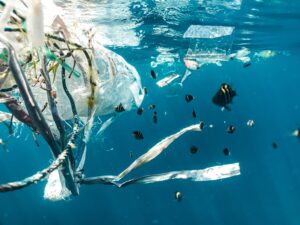Plastic pollution in oceans will continue to rise for decades
Despite growing awareness of the problem, an increase in the prevalence and impact of microplastics in marine ecosystems is baked-in for years to come.
Germany’s Alfred Wegener Institute – which studies Arctic, Antarctic, and high and low latitude ocean environments – was commissioned by the World Wide Fund for Nature (WWF) to analyse around 2,600 existing research papers focused on pollution in seas.
The work was undertaken to deliver an overview of the global situation ahead of a United Nations meeting this month, and concluded areas including the Mediterranean, East China and Yellow seas now contain dangerous levels of plastic. Meanwhile, several other regions are on a course to join them soon.
‘We find it in the deepest ocean trenches, at the sea surface and in Arctic sea ice,’ said biologist and co-author of the study, Melanie Bergmann.
Those behind the study outlined how almost every species in the ocean has been affected by plastic, which has had a devastating impact on ecosystems including coral reefs and mangroves. However, as these materials break down into increasingly small pieces the likelihood of entering food chains grows, while the ability to remove them from water becomes near-impossible.
As such, Bergmann and her team recommended the best approach is to prevent any more plastic entering seas in the first place, pointing out that due to how these materials break down, even if pollution ends today the level of microplastics is guaranteed to continue increasing for decades, raising grave concerns for the future of creatures and plant life already under threat due to a range of human-caused pressures, including rising temperatures, with extreme heat now a ‘new normal‘ in oceans across the globe.
Image credit: Naja Bertolt Jensen
















